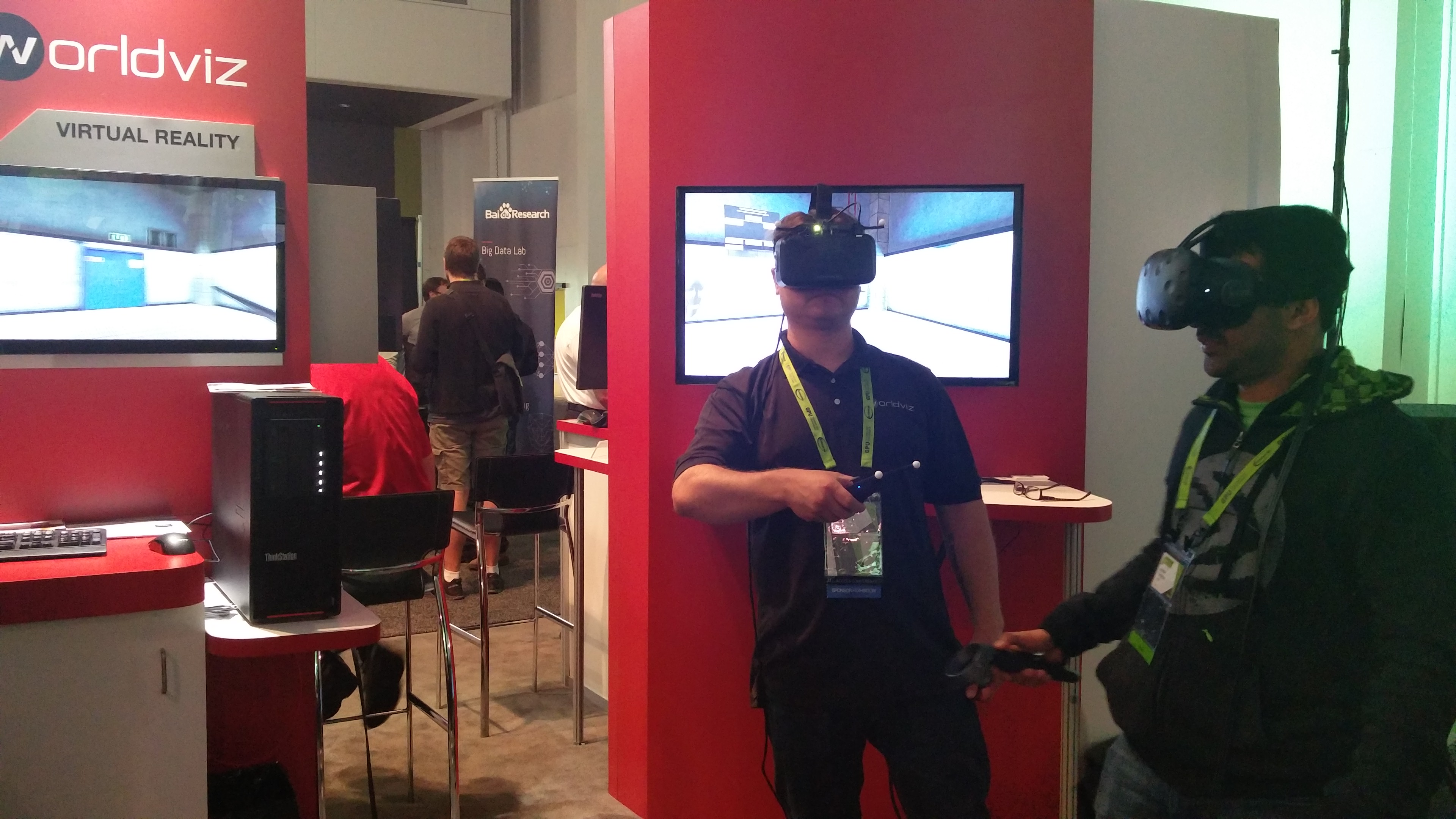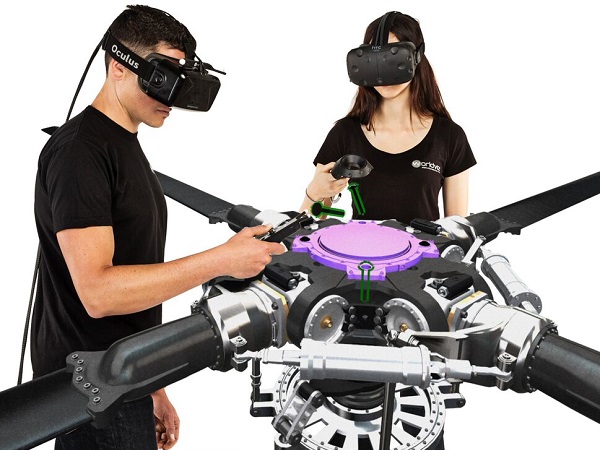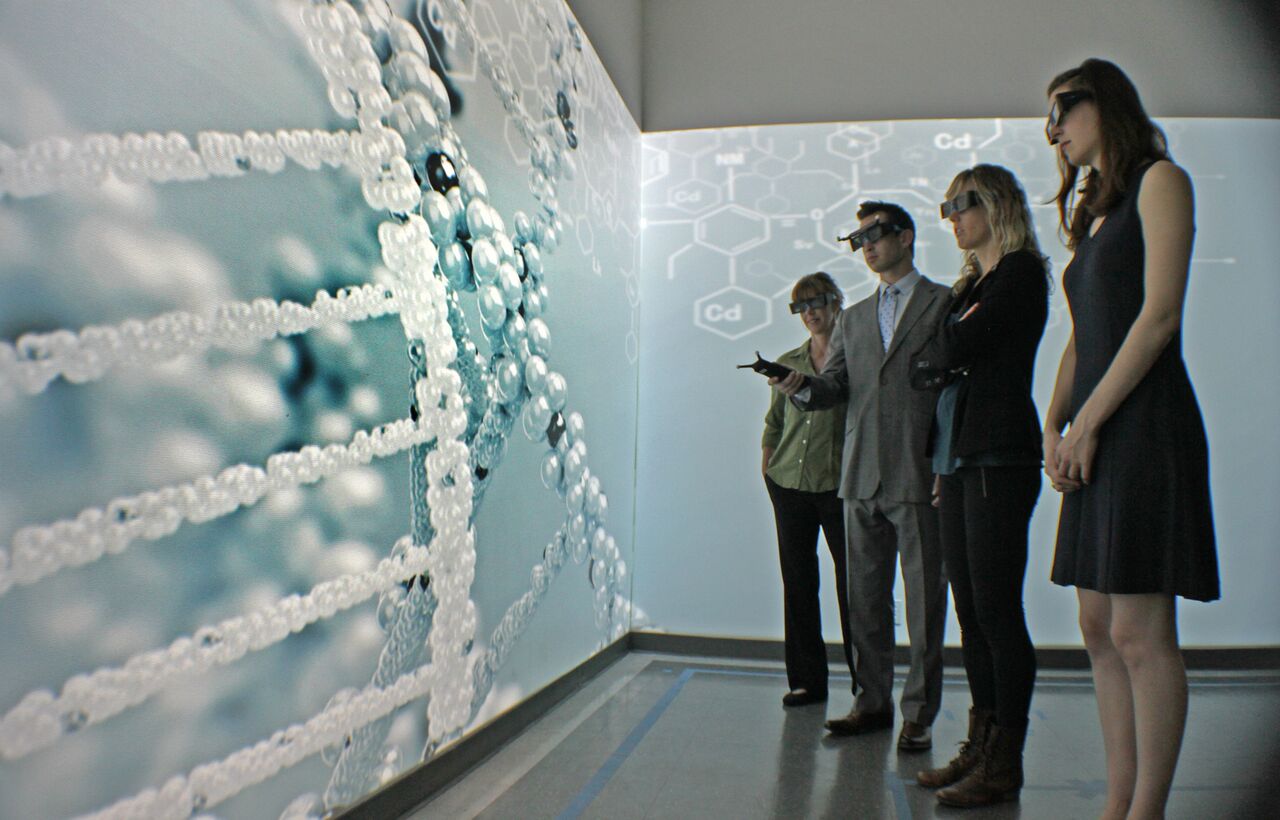Oculus Rift, HTC Vive Play Nice In WorldViz Demo At GTC 2016
With WorldViz, we witnessed the HTC Vive and Oculus Rift playing nice with each other in a collaborative demo.
There’s plenty to see at GTC 2016, and although it's mostly focused on the professional market, there's VR, fancy graphics, and powerful graphics cards are all over the place. One demo, held by VR software maker WorldViz, particularly caught our attention because it showed the HTC Vive and Oculus Rift playing nice with each other in a collaborative environment.
Considering that HTC Vive (our full review) and Oculus Rift (our full review) only just launched, we haven't expected much in the way of collaboration yet (an exception is Elite: Dangerous), but WorldViz pulled it off in its own software. This is, however, for professional applications; it's not accessible to consumers, and it's not a gaming environment. (Well, the one of the demos was sort of a game.)
The folks from WorldViz have certain requirements for the tracking systems, so although they deemed the HTC Vive's tracking system good enough for their purposes, they strapped their own tracking solution to the Oculus Rift DK2 that they used in the demo. WorldViz did mention, however, that HTC’s tracking system has the potential to track in larger rooms (WorldViz wants to be able to track large, warehouse-size rooms), but for now it's limited to 15x15 feet.
The two systems (Vive and Rift) were supposed to be calibrated to each other, so if I were to make virtual hand contact with the other user in VR, we would also physically bump hands. The problem was, however, that the demo was on a show floor, and people occasionally bumped into the tracking sensors, so the calibration was lost and we weren't able to fist-bump through VR.
WorldViz had a couple demos ready for us. One was collaboratively dismantling a helicopter rotor assembly, and in the other, I had to walk a plank between two platforms. In the second demo, the other user would toggle the platforms to raise or the floor to lower, causing me some vertigo. I could toggle these effects myself in the menu, but I would not experience the same vertigo if I did so. I would then walk the plank between the two platforms, genuinely feeling as if I could fall.
Naturally (and on purpose), I stepped off the plank to see what would happen if I fell. For other VR demos I’ve experienced, there was always a “fade to black” effect, but the WorldViz demo actually let me fall all the way down. The fall was not so long that I felt nauseous, and indeed, the Worldviz crew said that they did their best to find a balance creating the sensation of falling without letting to go for so long that it made people nauseous. I’d say they succeeded quite well.
We also spoke to WorldViz’ CEO, Andrew Beall. We asked him a handful of questions about his thoughts on the new consumer-geared HMD platforms and about whether he liked them or felt threatened by them. Beall explained that WorldViz had already been selling professional HMD solutions for years (expensive pro-only models) and that the new HMD actually presented a huge opportunity for his company. While its past solutions would cost tens of thousands of dollars, consumer-oriented HMDs will cut their hardware costs significantly. In turn, that would allow them to access audiences with smaller budgets, generating tremendous new business opportunities.
Get Tom's Hardware's best news and in-depth reviews, straight to your inbox.
We also asked whether HMDs were a threat to their traditional corner-projected virtual reality business, and Beall explained that was not the case. Many professional users still wanted to be able to see each other when working in a VR environment, to have that human interaction and the ability to take notes.
Follow Niels Broekhuijsen @NBroekhuijsen. Follow us @tomshardware, on Facebook and on Google+.
Niels Broekhuijsen is a Contributing Writer for Tom's Hardware US. He reviews cases, water cooling and pc builds.



